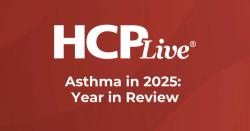
OR WAIT null SECS
How Health Plans Can Help Address Coronavirus
Digital tools can be leveraged to help treat more patients remotely.
Trishan Panch, MD, MPH
As rates of coronavirus disease 2019 (COVID-19) cases increase, clinicians stand prepared for an influx of cases of acute respiratory illness. Although it seems that for the vast majority of people the risk is small, it appears that the consequences of this virus are disproportionately borne by multi-morbid patients—people with co-occurring diseases who are often elderly.
As more people contract COVID-19, the greater the chance that those most vulnerable will be exposed. If the spread continues, it will increase the number of people who will need ICU care, which could ultimately overwhelm or strain limited healthcare resources. To put in software vernacular, this pandemic is a "denial of service attack" on the health system. In a denial of service attack, a computer server is presented with an overwhelming number of simultaneous requests, causing the system in question to collapse. The same is true of coronavirus—a significant volume of concurrent cases requiring Intensive Care at the same time would overwhelm even a well-resourced health system such as that in the US.
The Role of Health Plans in This Outbreak
So, what can be done to mitigate this problem? We’ve observed that efforts are well underway at health plans who have established long-term, trusted, and engaged relationships with their members who are most at risk.More broadly, it has been reported that health insurance plans are relaxing co-pays on testing and reinforcing public health guidance to their members. What’s lesser known is that health plans already offer a complimentary service to monitor and support members with multimorbidity—those most likely to suffer the more serious consequences of the coronavirus. Known as care management, real nurses and health professionals at the health plan provide remote assistance to people managing multiple conditions and can check in on the health and well-being of these populations.
AI Reveals Evidence of Increased Health Plan Advocacy
Given the increasing adoption of digital tools in care management programs, those same nurses are able to assist many more members in dealing with their chronic disease management needs and emergent health concerns. Digitization also extends these therapeutic relationships, giving people a way to ask questions on their own time via secure mobile messaging, which can also help them better use and navigate the healthcare system.The large datasets generated by these digital health solutions afford another unique opportunity amidst a public health crisis: a window into health trends among those most at risk from COVID-19.
Using natural language processing algorithms optimized for chronic disease management, we observed an increase in member messaging to nurse care managers on the Wellframe platform discussing symptoms associated with coronavirus. We examined conversations related to the symptoms of dyspnoea, cough, and fever. Using these AI techniques, a message such as, “My breathing is a bit more difficult, what shall I do?” will be tagged with the concept of dyspnoea, even though dyspnoea was not specifically mentioned. Other common topics of conversation included member concerns around travel plans, education about the virus, questions about available vaccines, anxiety triggered by the virus, and questions from concerned mothers or mothers-to-be.
There has been a noticeable steady uptick in these messages in January and February. Similarly, we saw a significant increase in specific mentions of coronavirus in messages from care managers, demonstrating that they are using the platform from a public health perspective to help inform and support multimorbid patients.
Key Takeaways
These findings demonstrate the importance of investing in building long-term relationships by supporting members who have multiple long-term conditions. One of the problems that public health bodies face more broadly is the lack of a direct and trusted channel for communicating with these populations. The proactive investment in engagement means that health plans are positioned to respond quickly in the event of a health crisis with trusted support and education. In addition, these new digital channels extend clinicians’ ability to respond at the individual level to patients with their own individual problems or concerns.
Healthcare leaders undoubtedly hear a lot of hype about AI. As much of its benefit to healthcare is to be seen in the future, the majority of frontline care remains stubbornly analog. What we have seen is that AI technologies such as natural language processing can be deployed to give care teams super powers: the ability to understand the needs of the most vulnerable in real time and at a scale that was previously impossible, and channel their selfless dedication most effectively.
Trishan Panch, MD, MPH, is the chief medical officer of Wellframe. The presented analysis reflects his views, not necessarily those of the publication. 
Health care professionals and researchers interested in responding to this piece or similarly contributing to HCPLive® can reach the editorial staff by submitting a request here.


